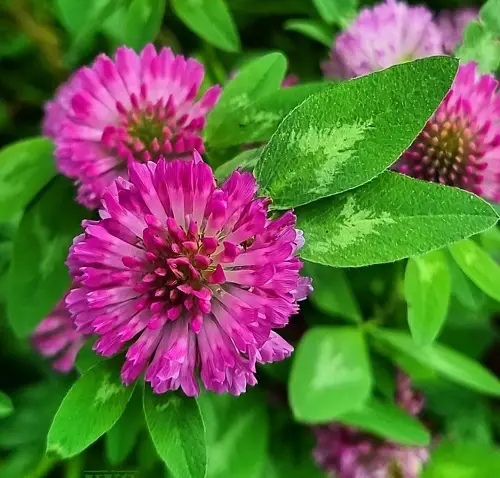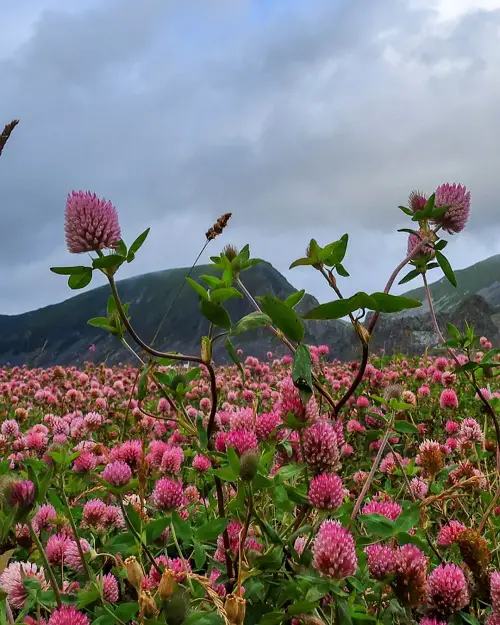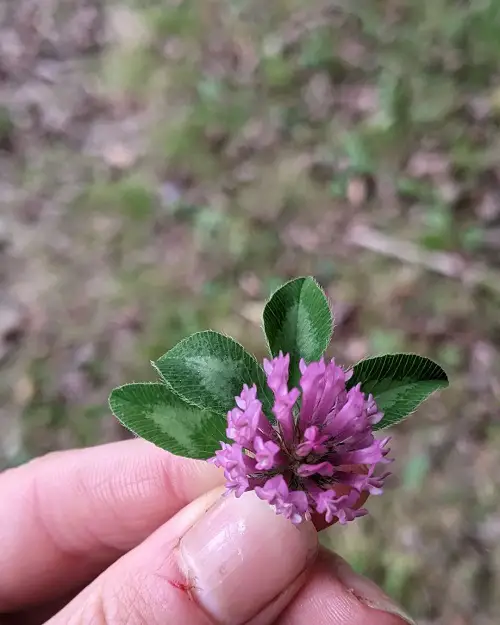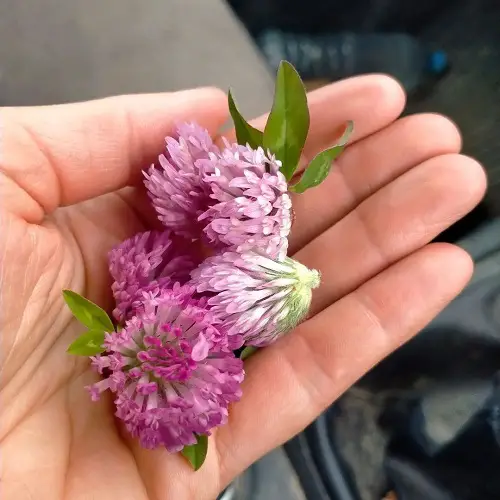Planting and Growing Red Clover can be of great help to you and your farm animals. Learn How to Grow Red Clover from our guide.

Planting and Growing Red Clover is not at all difficult if you know how to do it in the right way. Here’s all the information on How to Grow Red Clover easily in the garden and pots.
Botanical Name: Trifolium pratense
USDA Zones: 3-8
Common Names: Beebread, Cow Clover, Daidzein, Genistein, Isoflavone, Meadow Clover, Phytoestrogen, Purple Clover, Trebol Rojo, Trèfle Commun, Trèfle des Prés, Trèfle Pourpre, Trèfle Rougeâtre, Trèfle Violet, Trefoil, Trifolium, Trifolium pratense, Wild Clover
Learn how to grow White Clover here
Red Clover Plant Information
 Red clover is a perennial plant grown widely and cultivated as a forage grass in many countries. The name is misleading because the plant is not red at all.
Red clover is a perennial plant grown widely and cultivated as a forage grass in many countries. The name is misleading because the plant is not red at all.
With green leaves and hairy stems, it produces beautiful pink flowers and grows up to 2-3 feet tall and 1-2 feet wide, producing spikes of purple-red color.
Red clover is also considered a medicinal plant. The drug is made from its flowers, containing a volatile oil loaded with flavonoids. Usually, the plant begins to bloom in early spring until May.
Have a look at the best good luck plants here
Propagating Red Clover

It can multiply rapidly by sending out offshoots called stolons that you can separate from the guardian plant to propagate red clover. Once it establishes roots, Red Clover can spread quickly and fill up any empty space in your garden.
Propagating Red Clover via Stolon Cutting
The ideal time to propagate via stolon cutting is early spring until early summer. Follow these steps:
- Find a mature, healthy plant and look for stolons that branch out at the base. It could be slightly below or above the soil and have tiny hair-like roots.
- Begin to separate the stolon from the guardian plant using clean and sharp scissors or pruning shears. Be careful not to uproot the mother plant. It is one of the important steps while Growing Red Clover.
- Dip the cut part of the stolon into the rooting hormone to speed up the process. Though this step is optional, and you can skip it.
- Plant it in a pot filled with a well-draining potting mix.
- Water well and keep the pot where it gets bright and indirect sunlight.
Check out our article on growing pothos indoors here
Planting and Growing Red Clover from Seeds

Growing Red Clover from Seeds between January-April and August-November is the best.
- Sow the seeds 1/4 inch deep in a well-draining potting mix.
- Alternatively, you can scatter the seeds on the surface and gently dust them with soil.
- Keep the soil evenly and consistently moist and the container or spot partially shaded.
- In 2-3 weeks, you will notice new growth.
Here are some great benefits of Lucky bamboo
Requirements for Growing Red Clover

Sunlight
Growing Red Clover where it gets a minimum of 3-4 hours of direct sunlight, is best. Keep it safe from the harsh afternoon light. Do not grow it at a spot that gets shade for the most part of the day, as it will result in little to no flowers.
Soil
You can grow Red Clover in rich sandy, loamy, or clay soil rich in calcium with excellent drainage. It loves a pH level between 6-7.2. Add plenty of organic matter and compost when planting to boost growth.
Water
Growing Red Clover in slightly moist soil is the best way to make it thrive. Do this by watering the plant only when the topsoil feels a little dry to the touch. Though it is a drought-tolerant plant, do not let the soil go dry for extended periods of time.
Temperature and Humidity
Red Clover thrives best in a temperature range of 59-75°F or 15-23°C for optimum growth. The seeds need a warm environment, like 60°F or 15.5°C, to germinate.
However, the seedlings and seeds can survive low temperatures like 17°F or -8.3°C.
Check out how to grow Orchids indoors here
Red Clover Care

Fertilizer
Red Clover is usually nitrogen-fixing, and you may only need to feed it occasionally if the soil lacks the necessary nutrients.
Use a balanced fertilizer, diluted to 1/2 of its strength, once in 5-6 weeks. This is all you need to do while Growing Red Clover to give it the right care it needs.
Pruning
You may not need to prune this plant, but you can use the cut parts as green manure to add nutrients to the soil.
Diseases and pests
Common diseases that attack red clover are brown spots and powdery mildew. Fungal infections also affect the condition of the leaves – plants wilt, turn yellow, and wither.
In pests, look out for aphids and spider mites.
Here’s everything you need to know about growing basil indoors
Harvesting Red Clover

Harvest Red Clover by plucking off the top leaves and the flower heads. If you want to dry them, harvest them during the wee hours when there will be some dew on the flowers.
Make sure not to cause any damage to the blooms. It will help keep the flowers’ color intact after they dry. To learn how to harvest red clover, read this.



Can i use your instructions for growing as an edible flowwer?
question
Red clover seed propagated in February
Later frost stopped growth
Will it grow again now warm wether has come